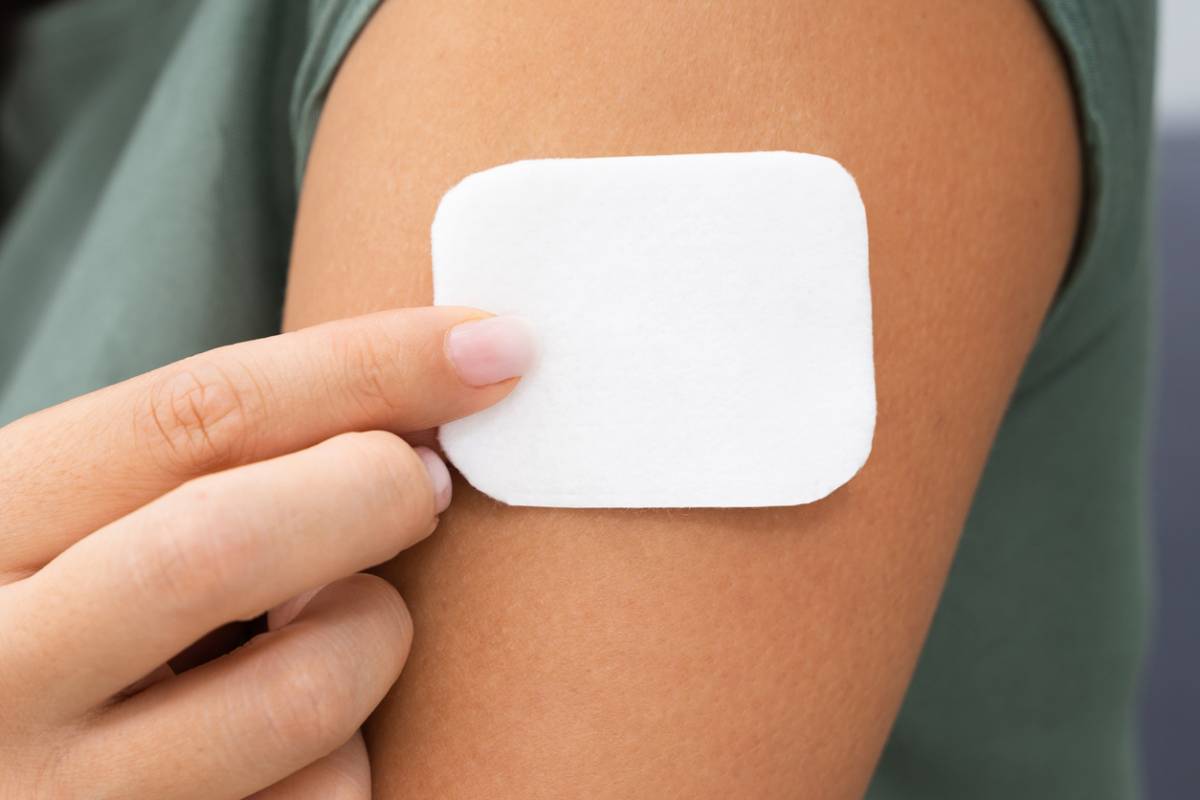Transdermal medications have diverse uses, with the most well-known example perhaps being nicotine patches. They apply medications directly onto the skin, allowing for systemic absorption through the dermal layers. In anesthesia, transdermal medication options have emerged as areas of interest for the delivery of analgesia, sedation, and adjunctive therapies. This route offers several advantages over traditional methods of drug delivery, including improved patient comfort, sustained release, and reduced risk of systemic side effects 1.
Transdermal patches are one of the most commonly used forms of transdermal medication in anesthesia. These patches contain a reservoir of medication embedded in a matrix or adhesive layer which slowly releases the drug over a specified period. For example, fentanyl patches deliver powerful opioid analgesia for the management of acute and chronic pain, offering sustained relief over 72 hours with minimal fluctuations in blood concentration levels. Bypassing the gastrointestinal tract and hepatic metabolism, transdermal fentanyl provides predictable analgesia while minimizing gastrointestinal side effects and drug interactions 2.
Transdermal options also exist for some adjunctive medications for anesthesia management. For example, transdermal scopolamine patches are used to prevent postoperative nausea and vomiting in surgical patients 3. By delivering a continuous, controlled release of scopolamine, these patches suppress vestibular and central nervous system pathways involved in nausea and vomiting, thus enhancing patient comfort and satisfaction during the perioperative period.
Another type of transdermal medication in anesthesia is the use of topical formulations for local and regional anesthesia. Lidocaine and tetracaine creams or gels can be applied to the skin or mucous membranes to provide local anesthesia for minor surgical procedures, venous cannulation, or nerve blocks. These allow for a rapid onset of action, reduced needlestick pain, and prolonged duration of anesthesia compared to injectable formulations 4. In addition, they reduce the risk of inadvertent intravascular injection and systemic toxicity.
A main advantage of transdermal medication options for anesthesia is the convenience and ease of administration. Transdermal patches and topical formulations eliminate the need for intravenous access or frequent dosing, reducing the burden on healthcare providers and minimizing patient discomfort. Moreover, transdermal delivery provides a steady, prolonged release of medication 1.
There are, too, a number of considerations and limitations associated with transdermal medications. Factors such as skin integrity, absorption rate, and individual variability in drug metabolism can influence the efficacy and safety of transdermal formulations. Patients with compromised skin integrity, such as burns or dermatitis, may experience atypical absorption and decreased efficacy of transdermal medications. In addition, certain drugs may not be suitable for transdermal administration due to their properties 1.
In conclusion, transdermal medication options can provide valuable flexibility to anesthesia practice, including precise delivery, sustained release, and improved patient comfort. As healthcare providers continue to explore innovative strategies for anesthesia management, transdermal administration remains a valuable tool for optimizing patient care and enhancing perioperative outcomes.
References
1. Transdermal Medications – StatPearls – NCBI Bookshelf. Available at: https://www.ncbi.nlm.nih.gov/books/NBK556035/. (Accessed: 21st February 2024)
2. Transdermal Patches: How to Apply Them. Available at: https://www.healthline.com/health/general-use/how-to-use-transdermal-patch. (Accessed: 21st February 2024)
3. Scopolamine Transdermal: Uses, Side Effects, Interactions, Pictures, Warnings & Dosing – WebMD. Available at: https://www.webmd.com/drugs/2/drug-14032/scopolamine-transdermal/details. (Accessed: 21st February 2024)
4. Prausnitz, M. R. & Langer, R. Transdermal drug delivery. Nature Biotechnology (2008). doi:10.1038/nbt.1504
